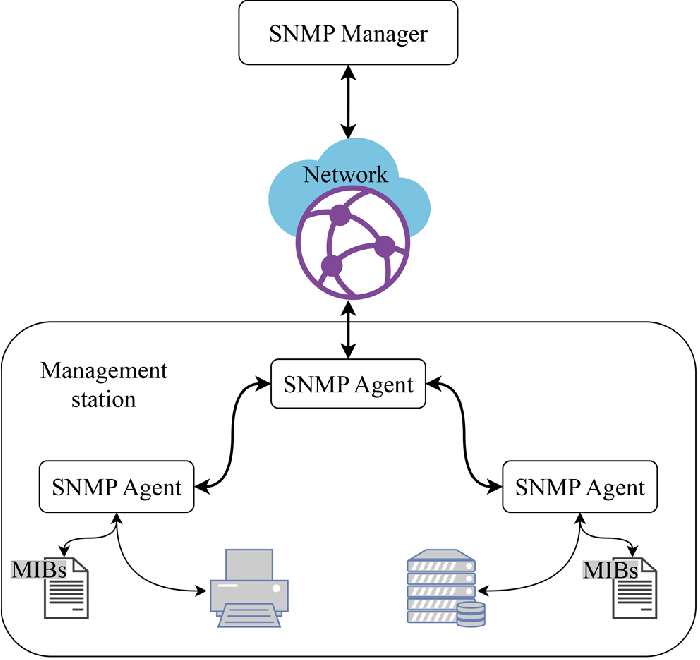Simple Network Management Protocol (SNMP)
The Simple Network Management Protocol (SNMP) is a widely used protocol for managing devices on IP networks. It enables network administrators to monitor network performance, detect network faults, and configure network devices such as routers, switches, servers, and printers. SNMP operates at the application layer of the Internet Protocol Suite and is an essential tool for maintaining the health and efficiency of networked systems.
Key Features of SNMP
1.Device Management: SNMP allows for the management of a variety of network devices, providing a standardized way to monitor and control them. This includes gathering information about device status, performance metrics, and configuration settings.
2.Polling and Traps: SNMP operates using two primary methods for data collection:
→ Polling: The management system (SNMP manager) periodically queries the devices (SNMP agents) for their status and performance data.
→ Traps: Devices can send unsolicited messages (traps) to the SNMP manager to alert it of significant events, such as failures or threshold breaches.
3.Hierarchical Structure: SNMP uses a hierarchical structure for organizing data, known as the Management Information Base (MIB). The MIB is a collection of information organized in a tree-like structure, where each node represents a specific piece of data that can be monitored or controlled.
4.Standardized Protocol: SNMP is an open standard, which means it is widely supported across different vendors and devices. This interoperability allows for seamless integration of various network devices into a single management framework.
5.Versions of SNMP: There are several versions of SNMP, each with its own features and enhancements:
→ SNMPv1: The original version, which provides basic features for monitoring and management.
→ SNMPv2c: An enhanced version that includes improvements in performance and security, but still relies on community strings for authentication.
→ SNMPv3: The most secure version, which introduces robust authentication and encryption mechanisms to protect data integrity and confidentiality
How SNMP Works
SNMP operates using a client-server model, where the SNMP manager acts as the client and the SNMP agents (running on the managed devices) act as servers. The communication between the manager and agents occurs over UDP (User Datagram Protocol), typically using port 161 for requests and port 162 for traps.
1.SNMP Manager: This is the central system that monitors and controls the network devices. It sends requests to the agents and processes the responses.
2.SNMP Agent: This is the software component running on the managed devices. It collects and stores data about the device’s performance and status, responding to requests from the SNMP manager.
3.MIB: The MIB defines the structure of the management data. Each object in the MIB has a unique identifier (OID) that the SNMP manager uses to request specific information from the agent.
Benefits of Using SNMP
→ Centralized Management: SNMP provides a centralized way to manage and monitor network devices, simplifying network administration.
→ Real-Time Monitoring: With SNMP, network administrators can receive real-time updates on device status and performance, allowing for quick responses to issues.
→ Scalability: SNMP can manage a large number of devices, making it suitable for both small and large networks.
→ Cost-Effective: By enabling proactive monitoring and management, SNMP can help reduce downtime and maintenance costs.

Conclusion
The Simple Network Management Protocol (SNMP) is a powerful tool for network management, providing essential capabilities for monitoring, configuring, and controlling network devices. Its standardized approach and support for various devices make it a cornerstone of modern network management practices. Understanding SNMP is crucial for network administrators aiming to maintain efficient and reliable network operations.
